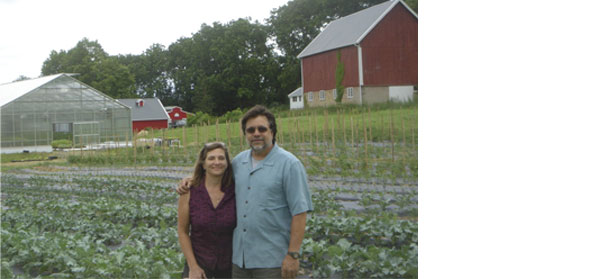

Apr 23, 2012Pest management options for sweet corn growers
Management of lepidopteran insect pests of sweet corn in New York state is changing.
Tools not practical or in existence a few years ago are now widely available, including new insecticide chemistries and cutting-edge Bt biotechnology. In addition, many of the assumptions growers have relied on in the past are changing. Insect migration patterns are changing and old methods such as pyrethroid treatments are becoming less effective. As a result, historical assumptions about insect management in sweet corn need to be reassessed and new management tools must be developed to keep pace with changes that are currently taking place.
Lepidopteran pests in sweet corn have historically been represented by three different species: the corn earworm (CEW), European corn borer (ECB) and fall armyworm (FAW). Historically, each of these insects has behaved in a certain, predictable way. CEW migrated into the state from the southern United States late in the season, sometimes causing problems but easily controlled with pyrethroids. ECB was the most consistent and significant pest, and practices focused on its control. FAW was an occasional problem.
In recent years, however, CEW has become a much more significant problem. CEW is appearing earlier in the season in New York, and 2011 had the earliest detection since 1993. Populations are on the increase across the state and, for the first time, pyrethroid resistance has been documented. In contrast, ECB populations have seen a decline in recent years. It is thought that increased use of Bt crops is contributing to this decline. There are also two new insect pests that might cause major problems in New York sweet corn: Brown Marmorated Stink Bug (BMSB) and the western bean cutworm (WBCW). WBCW has slowly been expanding its range eastward from the Midwest, and may be filling the ecological niche left by declining ECB. Last fall, WBCW was found in the Finger Lakes region.
BMSB, on the other hand, is moving up the Atlantic coast and has devastated many crops, including sweet corn, in surrounding states.
Insecticidal control of sweet corn insect pests is a critical part of any conventional management program. Cornell research indicates that pyrethroids, an important class of chemicals that historically controlled CEW, are losing their effectiveness in some areas of the state.
A new class of insecticides that act on sites specific to insects, the anthranilic diamides, performed consistently better than pyrethroids in our trials and offer new alternatives to older chemistries.
Biotechnology has been used to incorporate genes from the bacterium Bacillus thuringiensis (Bt) into sweet corn varieties. This follows on the footsteps of the use of Bt field corn, which currently makes up 65 percent of the field corn crop in the United States. Initially, Bt sweet corn expressed only one Bt protein, which, while very effective against ECB, was less effective against CEW. Now companies are “pyramiding” Bt proteins and getting very good control of both insect species.
Our tests have shown that dual Bt gene plants provided 100 percent damage prevention without the need for any additional insecticides.
One of the emerging issues in sweet corn pest management in New York is CEW, which is now migrating into the state earlier and in higher numbers. First detection occurred nearly 12 weeks earlier in 2011 than in 1993. Such a change will increase the potential for damage in crops planted earlier, though growers may not realize CEW is of concern at the time and miss treatment windows. Pheromone trap catches across the state have intensified in recent years, increasing the exposure of sweet corn to potential damage.
In 2010 and 2011, we discovered the presence of pyrethroid-resistant insects among late-season CEW moths. Pyrethroids have been an industry standard to protect sweet corn against CEW larval damage, so the presence of resistance is a cause for concern. Based on 2011 screening tests in the Finger Lakes region and Long Island, resistance to pyrethroids among CEW adults appeared to vary, depending on location and/or timing within the growing season.
The older scientific literature suggests CEW can’t overwinter north of the 40th parallel, a latitudinal line that runs through the midsection of Pennsylvania. But in recent years the Northeast has experienced a marked shift in climate change, and this may have led to the possibility that CEW may now be able to overwinter in New York. Such information is important, because an overwintering population will contribute to earlier detection and pressure on early season sweet corn. We are presently conducting tests to determine whether CEW collected in the fall of 2011 can overwinter in fields in Geneva, N.Y.
BMSB and WBCW are two important additions to the current group of sweet corn insect pests. BMSB, originally from Asia, can cause significant damage to the ear by removing plant juices from the kernels. This insect has devastated many crops in the mid-Atlantic states. WBCW also has potential to damage ears in much the same way as CEW, though damage is generally distributed throughout the ear.
In 2012, sweet corn producers in New York may face important new challenges, including changes to when and where CEW shows up and whether it will be resistant to pyrethroids. Add to this situation new pests such as WBCW and BMSB, and the risk of damage to New York sweet corn is substantial. Quick adoption of new management strategies when a problem emerges will be critical for growers in the coming years. New chemistries and Bt biotechnology options are becoming available and, combined with the knowledge that certain basic assumptions regarding pest management in sweet corn have changed, continued success in sweet corn production can be achieved.
By Anthony Shelton, Dan Olmstead, Cornell University














